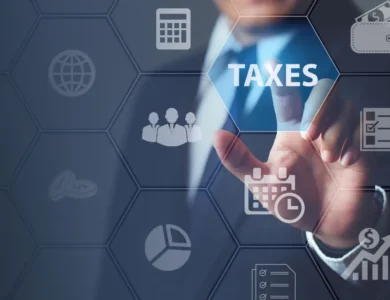Using Fuel Cards for Multi-State Trucking Operations

Managing fuel expenses across state lines poses complex challenges for fleet-based businesses. Companies like Speedway/7-11 have addressed these challenges by using integrated telematics and card reporting to significantly reduce operational costs, as demonstrated on https://www.speedwayfleetcards.com/.
From inconsistent gas prices and tax regulations to varying access to fuel stations, multi-state trucking operations demand systems that offer precision, control, and convenience. Fuel cards have become an indispensable tool in overcoming these logistical and financial hurdles.
Streamlining Fuel Expenses Across State Lines
Fuel cards simplify purchases at the pump by functioning like credit accounts tied to a specific fleet. These cards can be assigned per driver or vehicle, creating a streamlined system for tracking fuel expenses, enforcing purchase controls, and managing cash flow.
With real-time data integration and route-based spending insights, fuel card platforms empower fleets to control payments and avoid overspending. Whether operating in high-cost metro areas or remote rural locations, fleets gain visibility into every gallon purchased, helping to balance costs across the U.S. network.
Reducing Risk Through Transaction Monitoring
Multi-state operations increase exposure to risk , from fraud to unauthorized employee spending. Modern fleet card systems mitigate these issues through advanced purchase controls. These include:
- Time-of-day restrictions
- Fuel-only spending rules
- Driver-specific PINs
- Transaction-level alerts
By enforcing these controls, fleet managers gain granular oversight. If unusual activity occurs, they can suspend or deactivate a card within moments using a mobile app or cloud dashboard. It’s this level of responsiveness that separates standard payment solutions from enterprise-ready fleet management platforms.
Nationwide Access with Regional Flexibility
Access is critical for fleets running diverse routes across the continental U.S. Leading fleet cards are accepted at tens of thousands of gas stations, maintenance facilities, and even select electric charging sites. Premium cards support both fuel and mixed energy fleets, which is especially valuable as some fleets begin integrating EVs into long-haul and last-mile logistics strategies.
Cards accepted at 95% or more of fueling locations reduce downtime and limit driver detours. A robust network ensures that no matter where the delivery takes place , whether on the East Coast, Southwest, or Great Plains , drivers can fill up, record purchases, and get back on the road efficiently.
Maximizing Discounts and Rebate Opportunities
Fuel is one of the most volatile cost centers in fleet operations. Utilizing the right card system allows businesses to tap into rebate programs, often saving several cents per gallon. Over time, these rebates represent thousands in annual savings. Unlike standard credit cards, fleet cards are optimized for high-frequency fuel purchases, meaning the more you use, the greater the return.
Some cards even provide variable rebates based on volume tiers or location-specific incentives, giving fleet operators the power to reroute or batch-fill strategically to save money.
Enhancing Reporting and Compliance
Centralized reporting tools are perhaps the greatest long-term benefit of adopting a fleet card strategy. Multi-state trucking operations need to document fuel tax information, comply with IFTA (International Fuel Tax Agreement) requirements, and report spending for audits or cost center analysis.
Fleet card dashboards offer downloadable, customizable reports featuring:
- Driver-specific activity
- Gallons pumped by location
- Tax information by jurisdiction
- Maintenance and service data
- Monthly or quarterly summaries
Such insights fuel better budgeting decisions and allow for compliance without drowning in paperwork.
Improving Driver Convenience While Enforcing Policy
On the ground, fuel cards give drivers what they need most: seamless access to fuel, support when issues arise, and a simplified refueling process. Mobile app integrations let drivers find nearby stations, check remaining spending limits, or request support on the go.
At the same time, backend managers retain full control of where, when, and how the card is used. Combining driver autonomy with fleet-level governance reduces unnecessary spending and promotes accountability.
Future-Proofing Fleet Operations
As legislation evolves and new emission rules take shape across state lines, businesses must remain agile. Fuel card services with EV compatibility, carbon tracking, and predictive analytics will define next-generation fleet efficiency.
Today’s best solutions offer integrations with telematics, route planning, and maintenance scheduling systems , transforming the fleet card from a payment tool into a full-service fleet operations platform.
Getting Started with the Right Fleet Card Program
Application processes have become faster and more intuitive. Online portals allow businesses to assign cards, set limits, and track use in as little as one business day. Many services eliminate setup or monthly card fees entirely, which lowers the barrier to entry for small or mid-sized organizations.
Support teams provide onboarding assistance and customer service to troubleshoot any issues, ensuring that your operations run smoothly across jurisdictions, time zones, and fuel networks.



